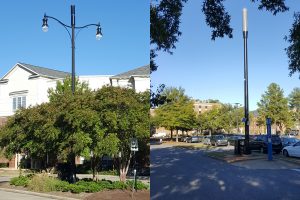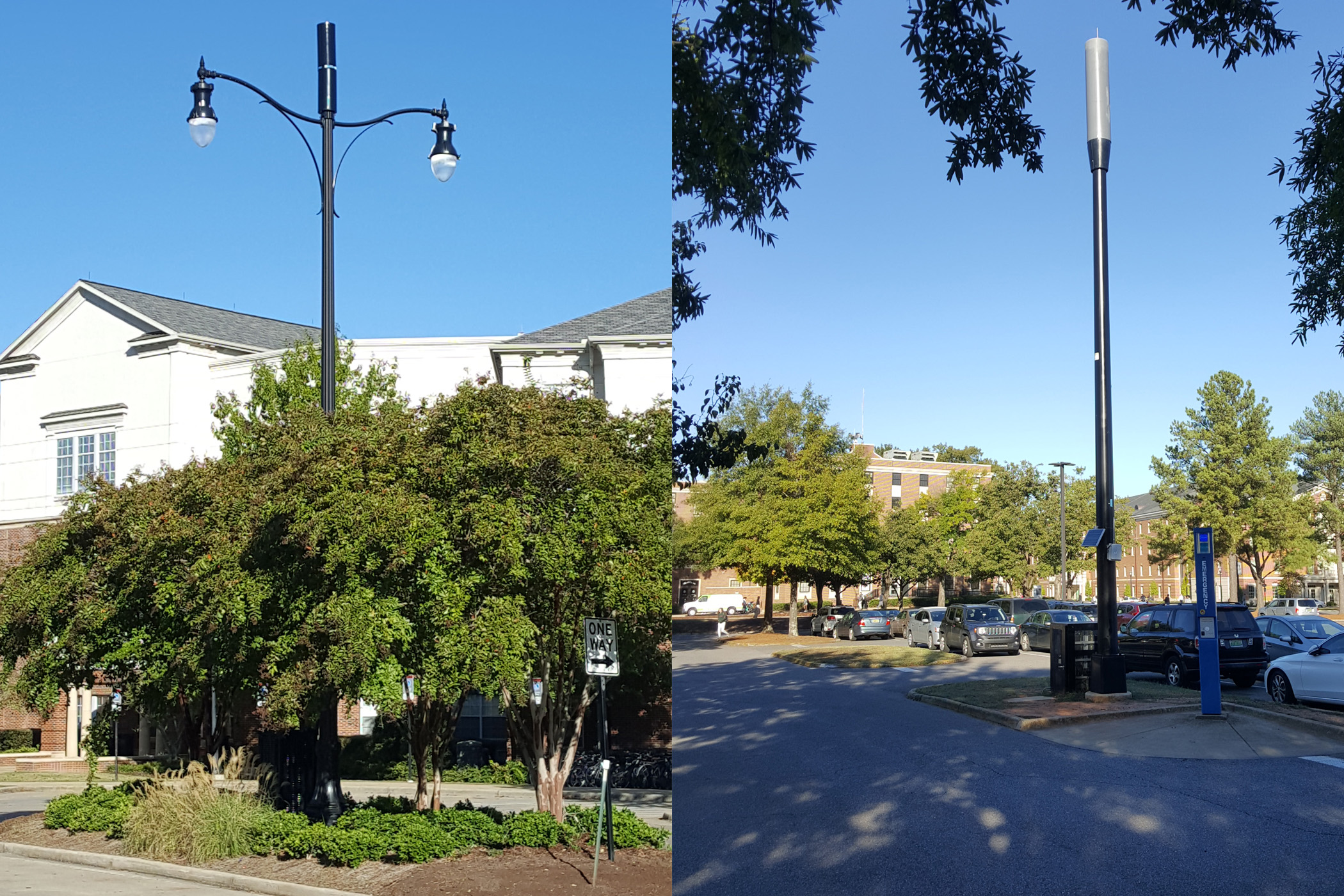Demand for consumer wireless data on mobile devices continues to explode and is expected to grow approximately 500% by 2021.

With the ever-increasing demand for mobile data and most of the UA population owning a smartphone, wireless carriers are installing “small cells” around campus to deliver the coverage, capacity and network reliability to users where they need it most.
“Small cells help relieve network congestion in areas with high demand for wireless services, offering better wireless experiences and faster download speeds,” said Andy Maddox, director of cellular operations at UA. “With 5G on the horizon, small cells will support 5G technology and prepare for the next-generation technologies, like smart cities, smart campuses, the Internet of Things (IoT) and other technologies such as AT&T’s AirGig – equipment that will bring super-fast internet to suburban and rural areas through power lines.”
Unlike traditional “macro” cell towers, which are large in size, small cells are typically mounted on existing structures like utility poles and streetlamps and are designed to be “low and tight,” blending into the existing environment, making them less obtrusive.
“Over the last three years, Verizon and AT&T have installed numerous small cells all over campus, making The University of Alabama one of the top universities for cellular connectivity.” — Andy Maddox
“T-Mobile and Sprint are scheduled to install a small cells network on campus once the T-Mobile-Sprint merger is finalized. This will provide much improved network connectivity on campus for all four of the major wireless carriers,” he said.
In 2018, Verizon and AT&T replaced the cellular connectivity system at Bryant-Denny Stadium with one of the most state-of-the art distributed antenna systems in the nation.
“Available network capacity inside the stadium has increased by more than 220%, which is significant,” said Maddox. “In addition, small cells have been added along the outer portions of the stadium to enhance wireless experiences for fans on game days.”
Wireless carriers continue to make investments in their networks to help improve the smartphone experience with an increased focus on in-building solutions. UA’s cellular operations department manages the coordination with the numerous wireless carriers, their agreements and equipment sites on campus. In addition, the group manages internal and external resources such as real estate, legal, IT infrastructure, campus partners, external vendors, installers and regulatory to improve cellular performance on campus and to stay abreast of the rapidly changing wireless technology in an effort to provide state-of-the-art cellular performance on campus.
